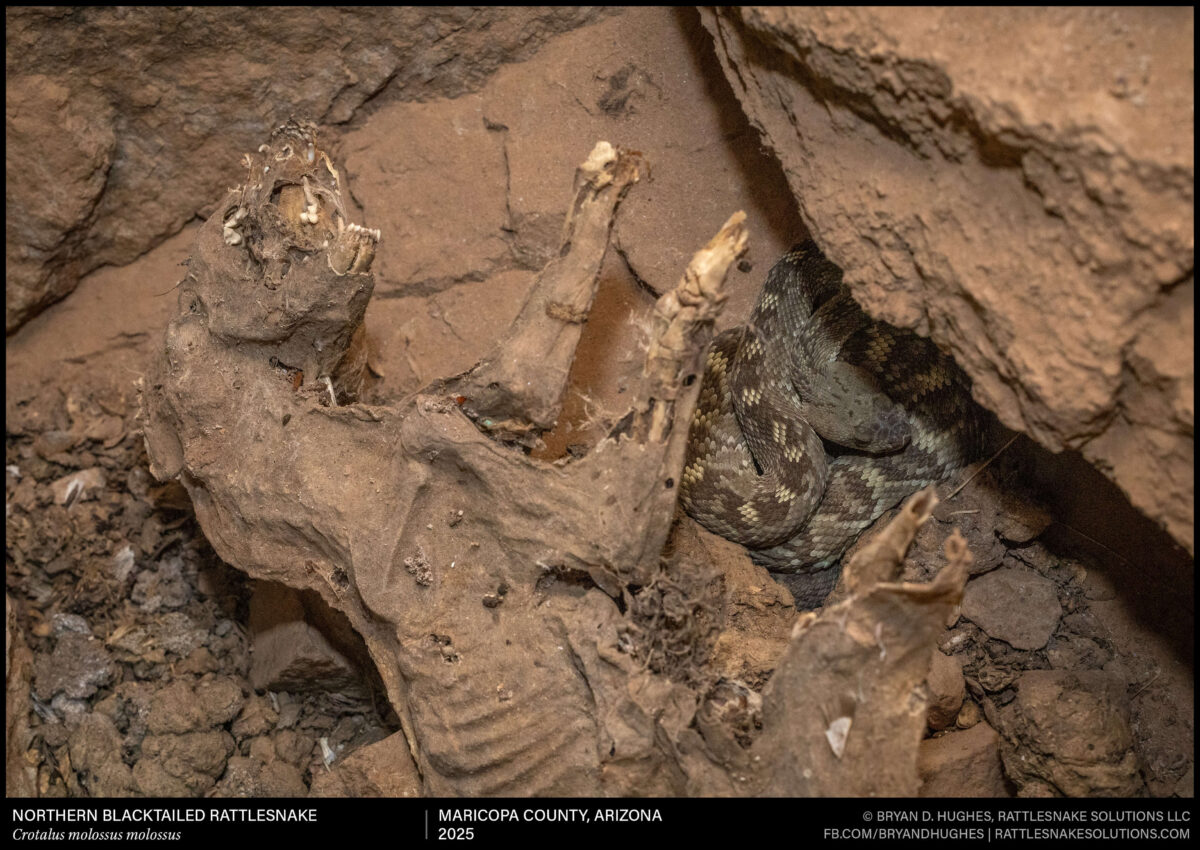A young Arizona Black Rattlesnake from the eastern end of their range, in Greenlee County, Arizona. With most of the light cross bars already having disappeared into the background color, this one may be an interesting looking adult.
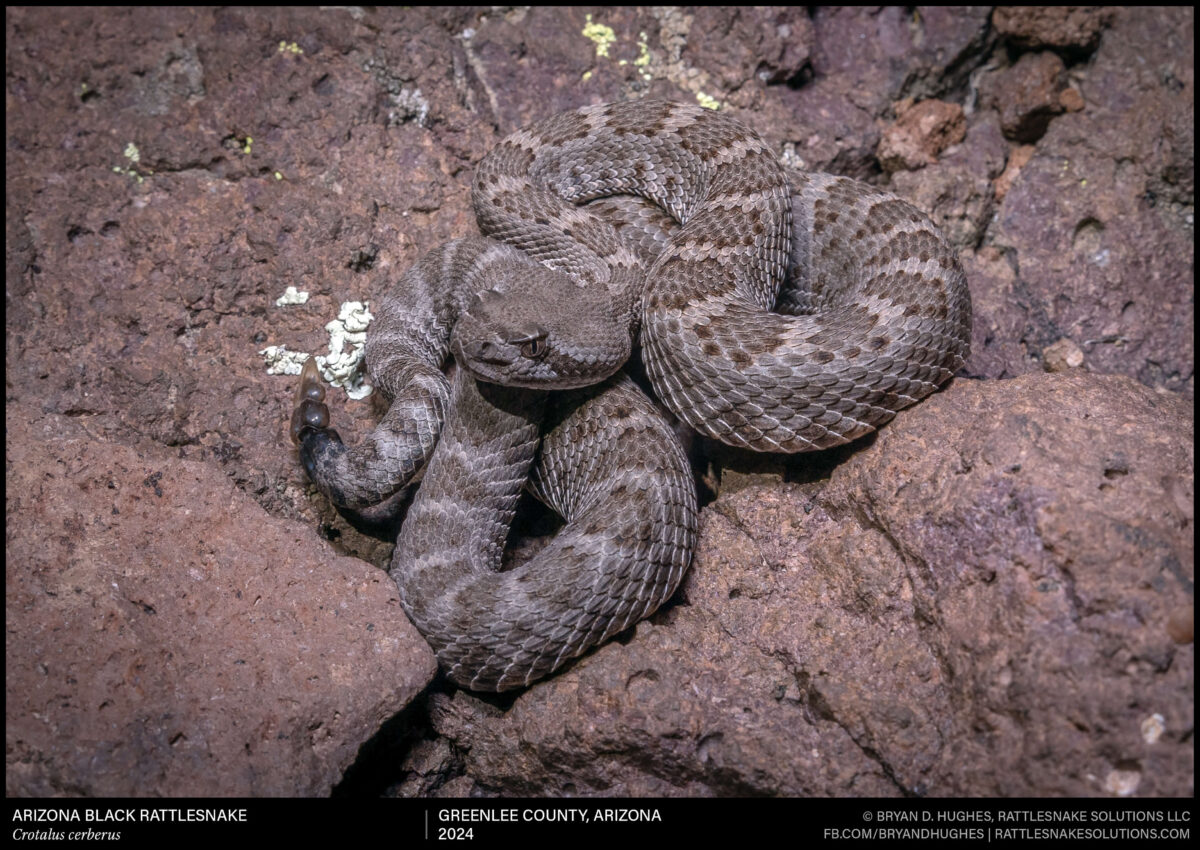
A young Arizona Black Rattlesnake from the eastern end of their range, in Greenlee County, Arizona. With most of the light cross bars already having disappeared into the background color, this one may be an interesting looking adult.

This Arizona Black Rattlesnake noticed me at the same time that I saw it as I climbed up a steep, rocky hillside. I stopped and got a few photos, and saw another one right next to it deeper in the crevice of the rocks. I was able to then back down the hill for another route up without further disturbance, and it resumed its move out to the open to get some sun.
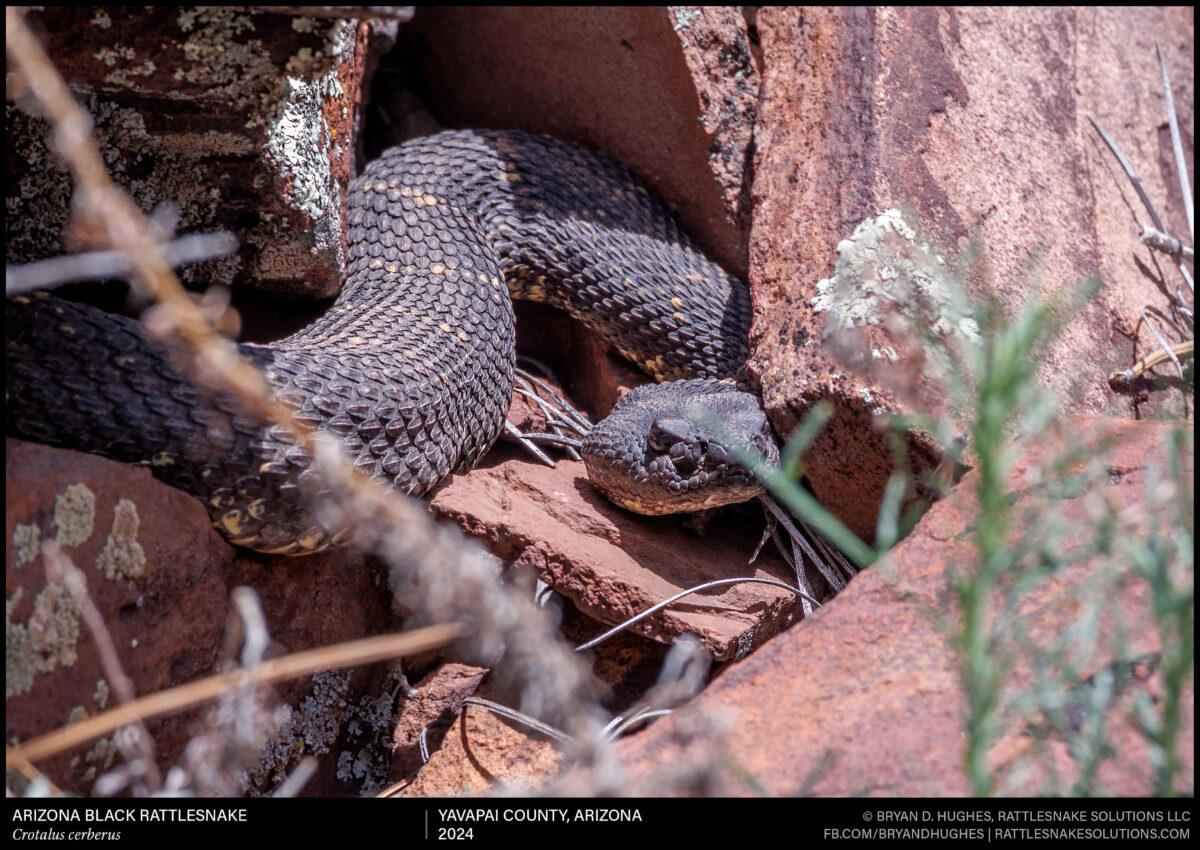
A Southwestern Speckled Rattlesnake resting outside its aestivation den, which it shares with several others to wait out the hottest, driest time of summer.
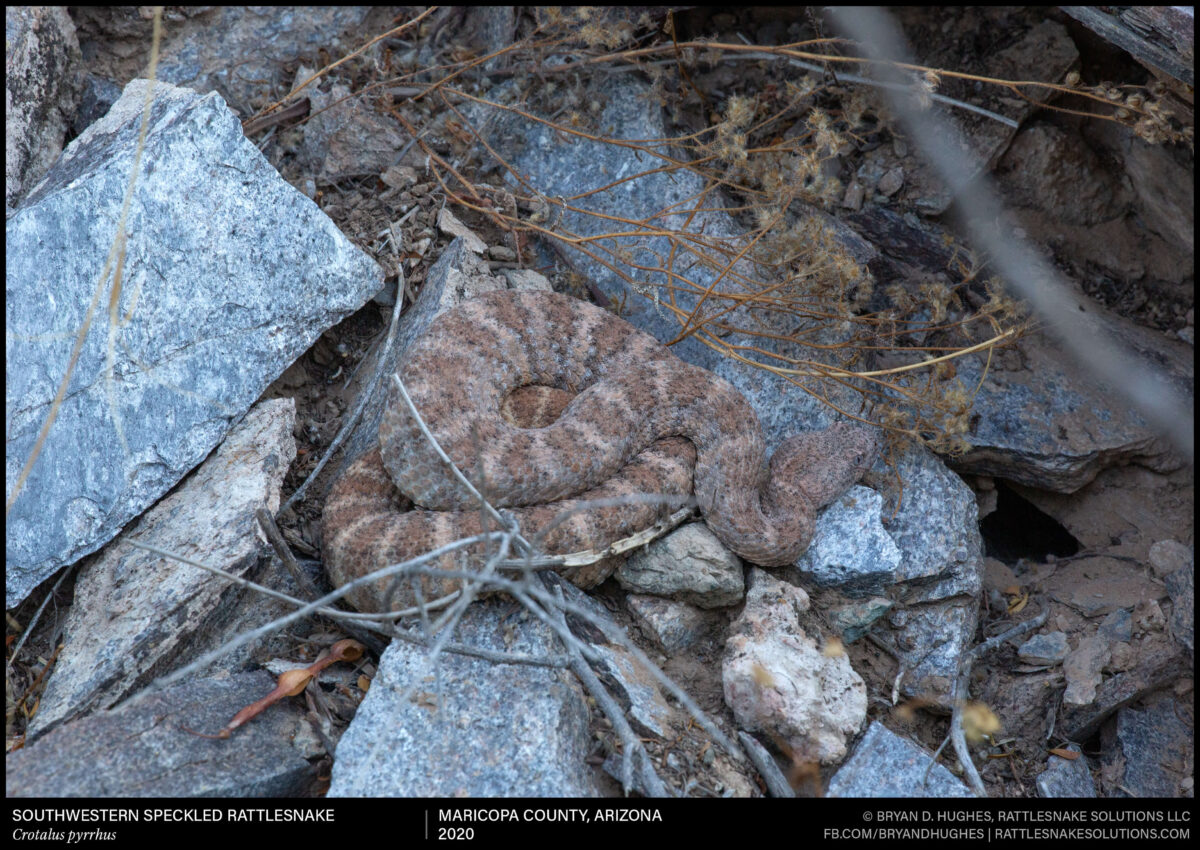
One of the many species of coralsnakes that can be found in the matrix of materials that make up the floor of the Amazon rainforest. This is a Hemprich’s Coralsnake. Also, its mimic, a harmless Black-headed Calico Snake. The body and head shape, as well as details of the pattern, are pretty different in a lot of ways, but it’s more than enough to make you think twice about reaching for one on a late night jungle hike when you see a black and orange flash in the leaves.
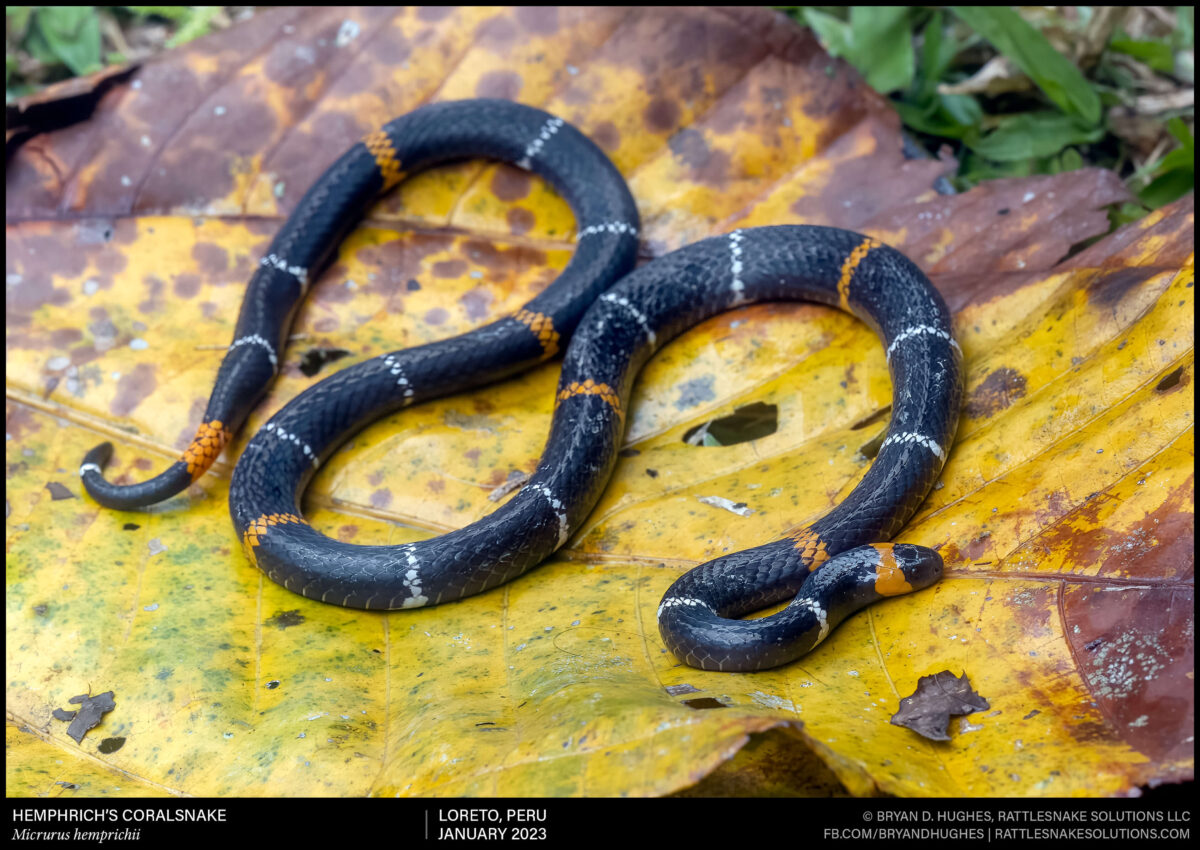
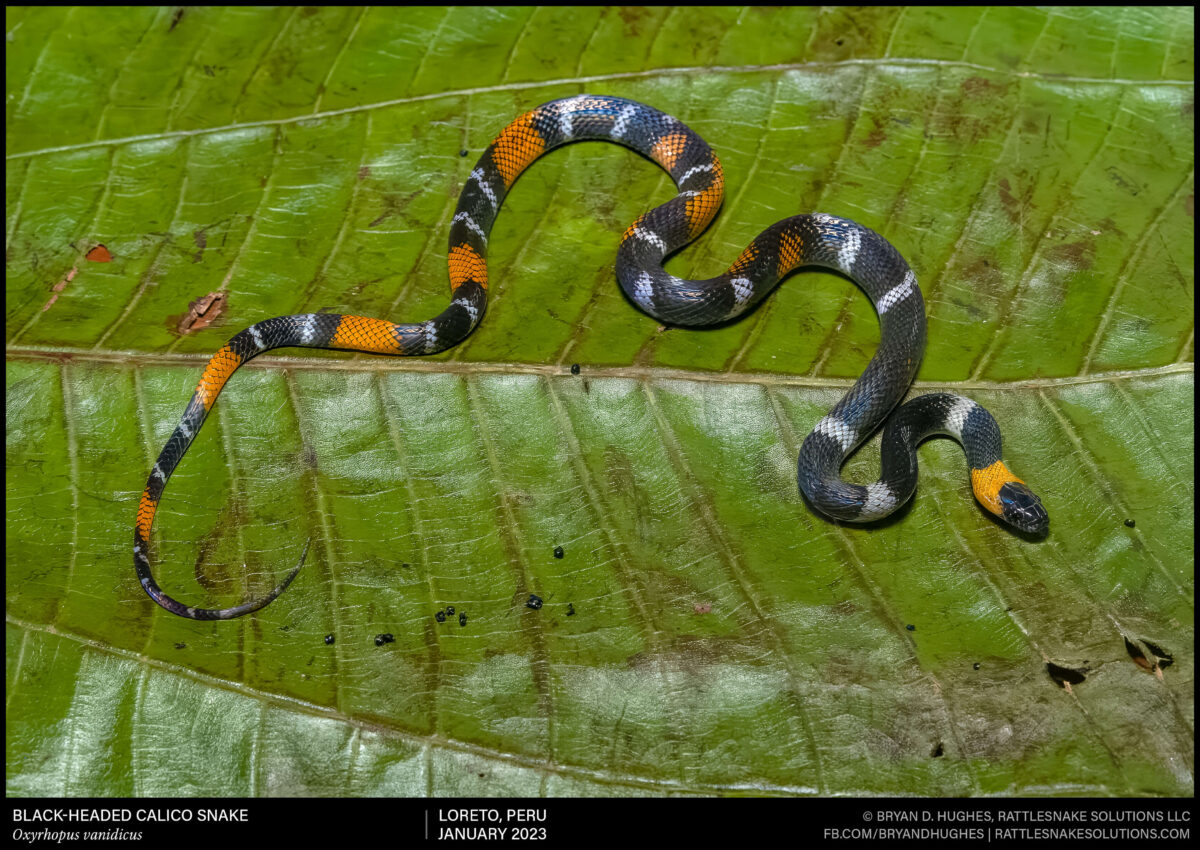
A Grand Canyon Rattlesnake from northern Arizona. In time, the pattern on this snake may continue to degrade and fade, but not to the same degree as is common for females of the species.
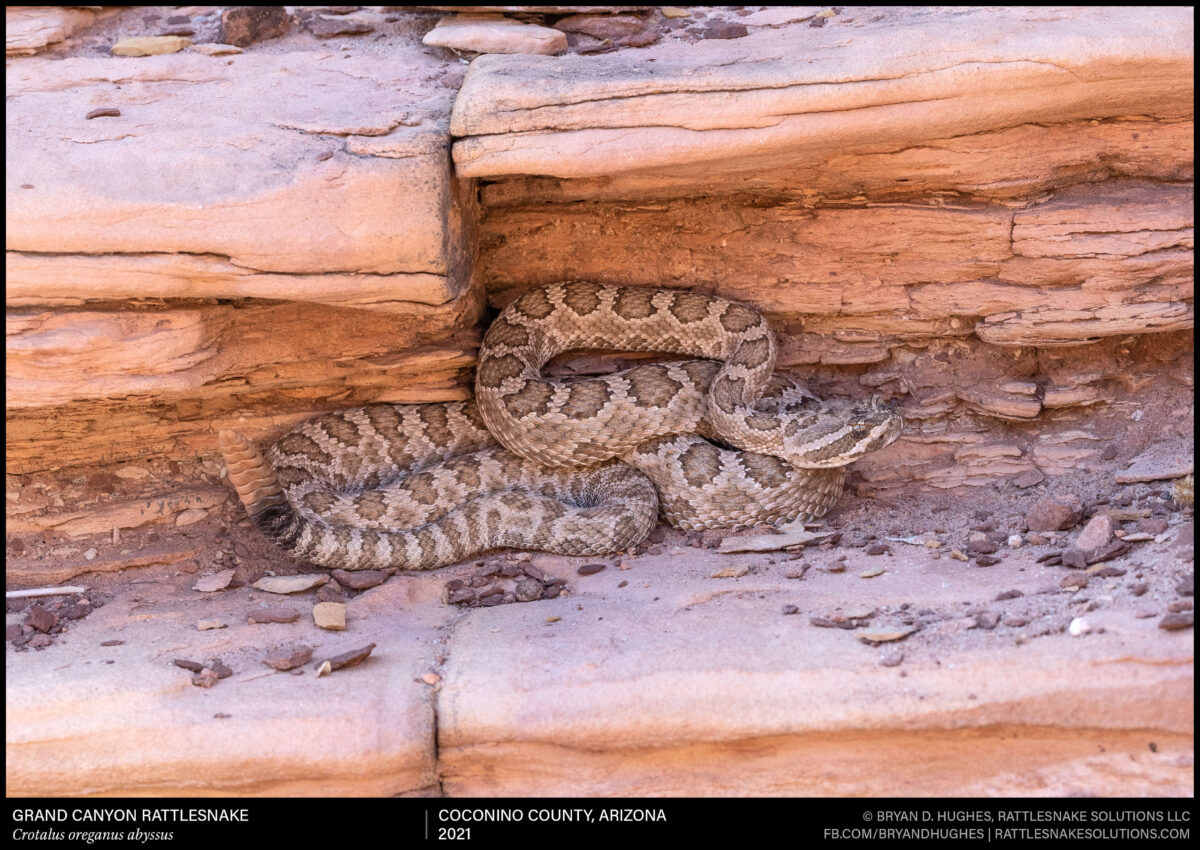
This Ghost Anole was one of many anoles seen on a trip to the high forests of Guatemala.
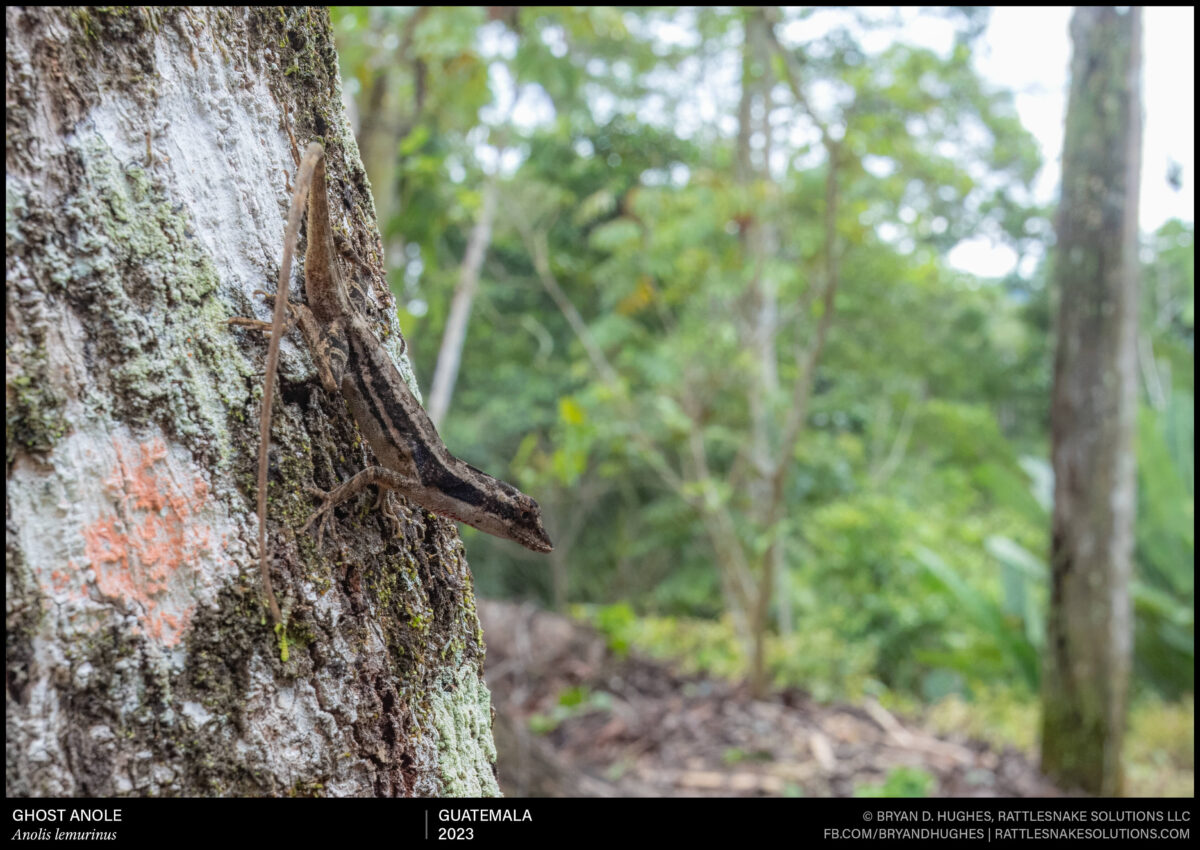
A Sonoran Desert Tortoise resting in the shade in on a hot morning in the Big Horn Mountains of western Arizona. These tortoises become nocturnal during the hottest parts of summer, moving and eating after dark and returning to their deep caves by the time the sun hits the area again.
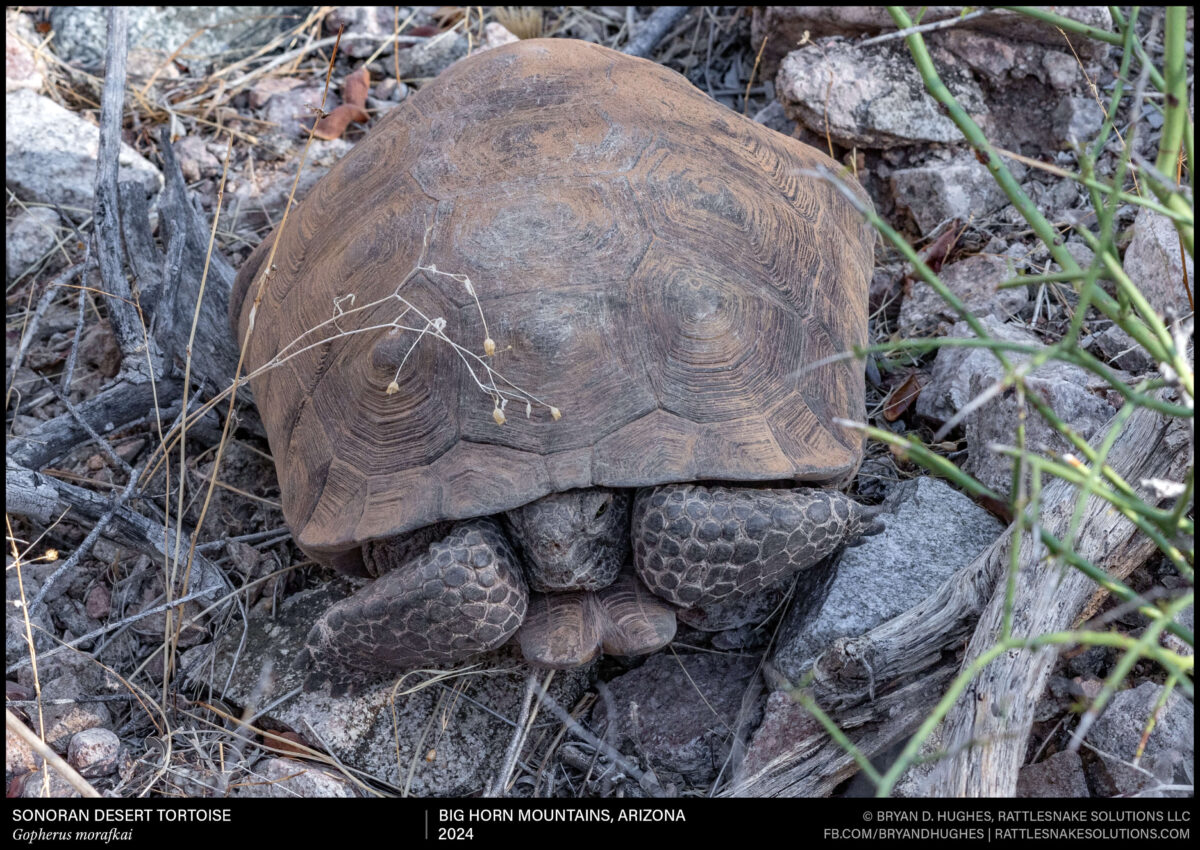
A Southwestern Speckled Rattlesnake hiding from the sun near the entrance of a shallow cave in south Phoenix. During the springtime, this species can be found even relatively far from its rocky habitat, hunting birds and lizards at the base of creosote. This caliche cave, which is also the occasional home to a Sonoran Desert Tortoise or two, is about as far from its winter and summer preferred homes as it will get in the year, nearly a quarter mile from the nearest sizable rock.
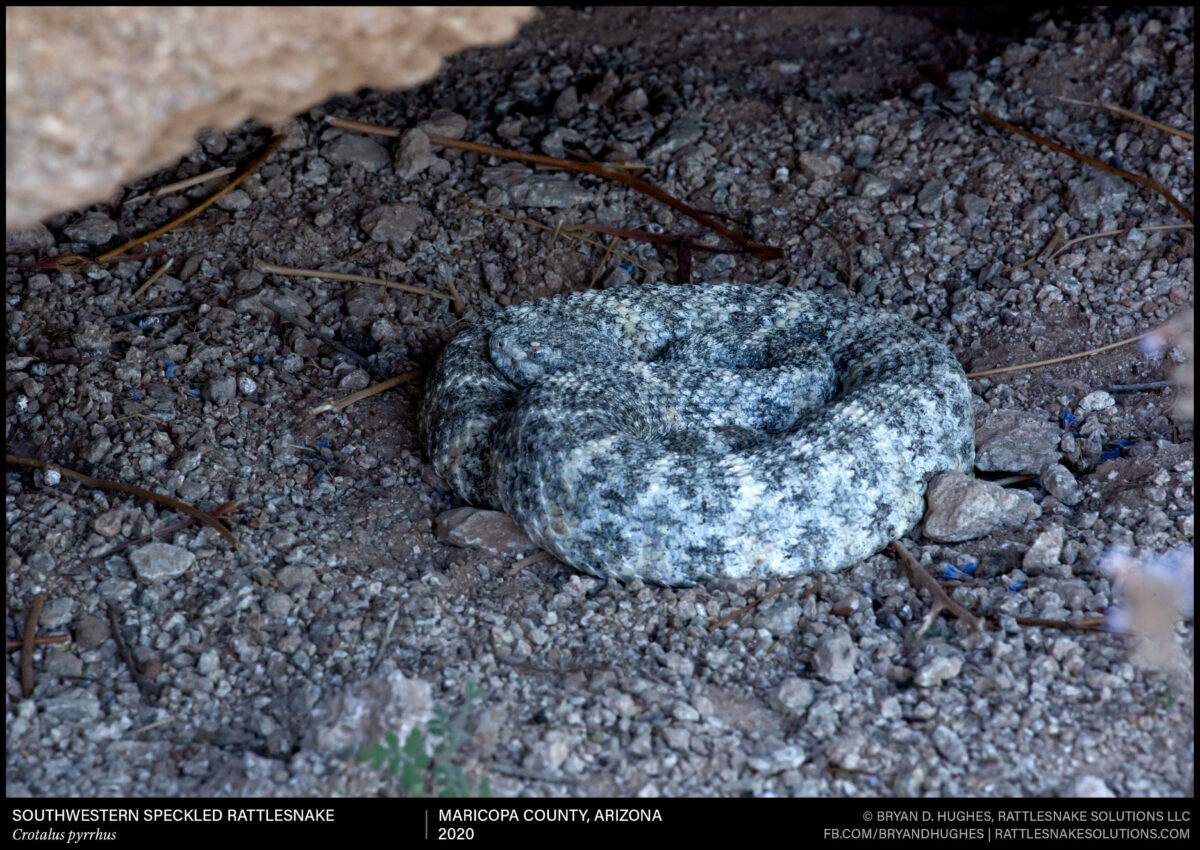
This animal is not being aggressive, not seeking a fight, or coming after anyone. It’s a defensive Mojave Rattlesnake letting me know that coming closer would be a bad idea.
Surprisingly, for a lot of people this seems to be an impossible task. They come after the snake with a shovel, the snake protests in the only way it can, and hoots of “look its aGgReSsIvE!” fill the air (and local social feeds) … and the feedback loop continues.
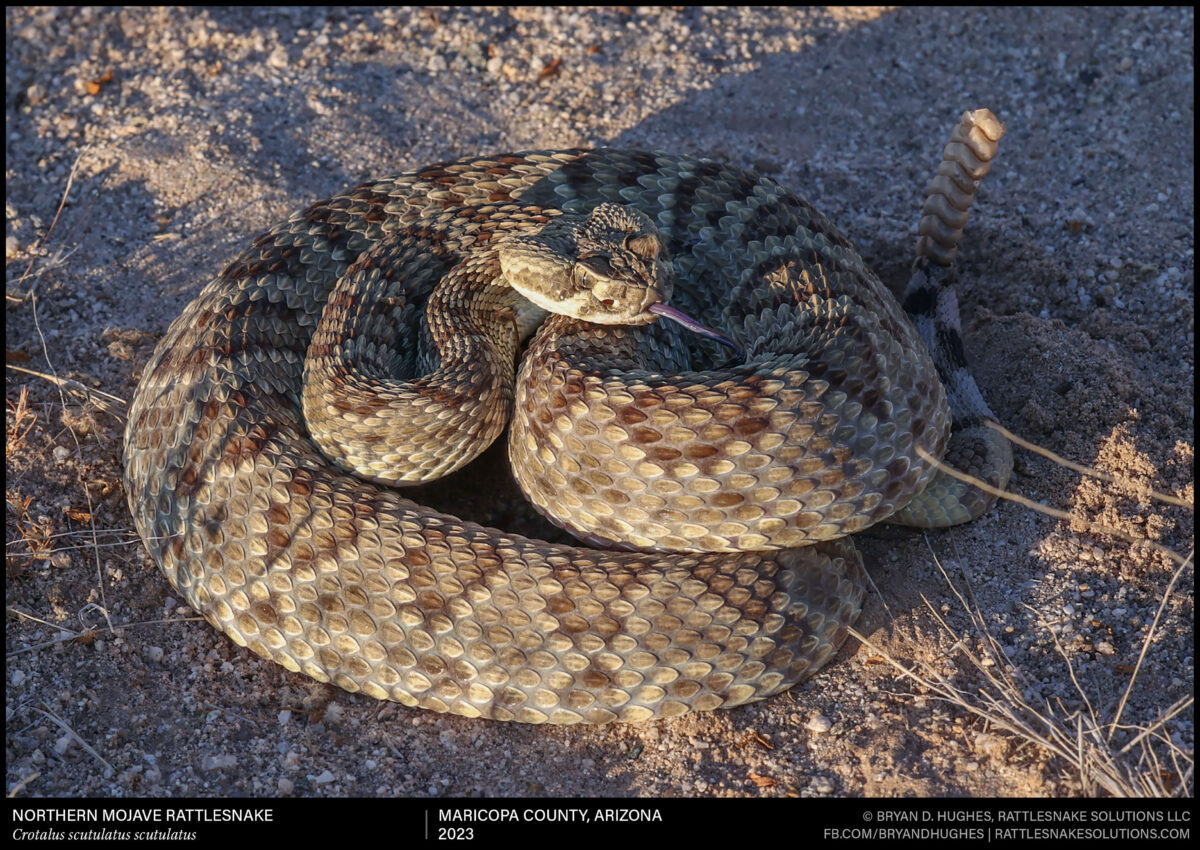
I found this young Blacktailed Rattlesnake resting under the dried-out husk of a small mammal (skunk?) in a cave near Phoenix on a survey of lands managed by Desert Foothills Land Trust.
In wet years, this small cave fills with water from a few inches to around a foot deep. It becomes putrid slop, full of javelina feces and dozens of animals hiding from the heat. This small mammal had died in that water, eventually settling against this wall. This summer, the cave was bone dry. But, the dozen or so rattlesnakes that aestivate here each year still showed up.
